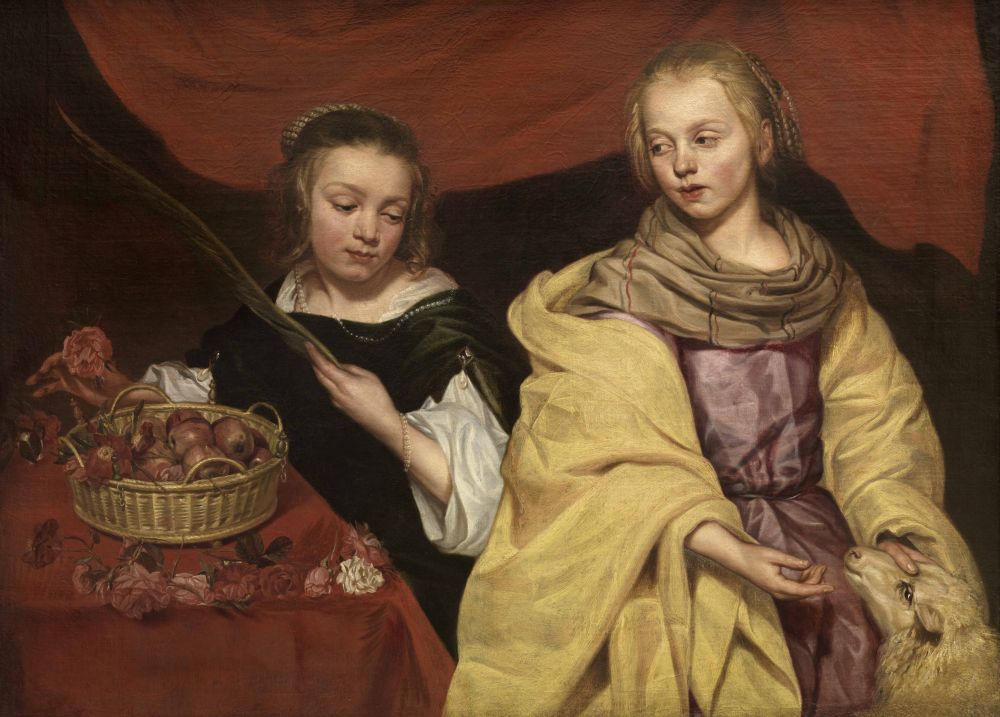Presenting the collection

The KMSKA’s collection runs to 8,400 objects making it impossible to show all of them to the public. Following a rigorous selection process, 650 works will soon get a place on the walls of the new and the refurbished galleries. The team is giving a huge amount of thought to the selection, location and installation of our masterpieces. Here’s a sneak preview.
Each item in the presentation is a key work selected for specific reasons:
- They encapsulate the story we want to tell through and about the KMSKA’s rich collection.
- Each has an immense artistic and/or historical value.
- When shown together, they reinforce each other and their meaning, or else create entirely new connections.
- They feature on the Flemish government’s official Masterpiece List, which means they enjoy special protection.
We have not been guided by chronology or style in our permanent display. Instead, we have opted for a dynamic arrangement within two major temporal clusters: the collection up to 1880 and the collection after that year. James Ensor is the pivot linking the two parts.
Art before 1880
Art dating from the 14th century to 1880 is displayed in the historic galleries. The building’s original architects, Jean Jacques Winters and Frans Van Dijk, designed the museum so that visitors could stroll around it. KAAN Architects has painstakingly restored those galleries, with immense attention to detail, enabling them to regain every bit of their historic grandeur.
Rather than narrow corridors, we see a symmetrical sequence of rooms that creates impressive sight lines and through views. Deep perspectives that emphasize the monumental feeling of the galleries as well as the importance of the works of art.

Deep views through the historical museum - For narrative art from before 1880

St Barbara of Nicomedia - Jan van Eyck, KMSKA
The display in the historic section is given over to shifting thematic and chronological approaches and to unexpected juxtapositions. For the most part, artists prior to 1880 were storytellers. Visitors are treated to a kaleidoscopic view of the great narratives within and behind the artworks, from maternal love to joyous celebration.
When the museum was first built, the Rubens and Van Dyck Galleries were reserved for the majestic altarpieces painted by the great masters Rubens, Jordaens and Van Dyck. This is where they will be shown once again.
The substantial collection of 19th-century art has been given a place in the Salon: three consecutive galleries crammed with art that was the height of fashion towards the fin-de-siècle. Including Orientalism, patriotic history and the everyday life of the bourgeoisie. Why ‘crammed’? Because that’s how they used to hang works at the big annual salons in Paris in the 19th century.

Two Girls as Saints Agnes and Dorothy - Michaelina Wautier, KMSKA
Art after 1880 & James Ensor
The original architects Winders and Van Dijk designed a museum tailored to the collection as it was at the end of the 19th century. By the 1920s, however, the building was already bursting at the seams with all the new purchases and donations.
The museum’s administrators had the enclosed garden roofed over to create more space. KAAN Architects have now removed those later structures to insert new volumes on the site of the original gardens.
This new section of the museum is a place of wonder, with a surprise around every corner. Not just because of the architecture, but the art too that will hang there: modern masterpieces from 1880 to the end of the 20th century. This art is more likely to be experimental than narrative in character. Modern artists did not necessarily depict the world in a naturalistic way. They turned the rules upside down, used alternative materials or worked in three dimensions.
Their work is organized in our collection around three themes: colour, light and form. A prominent place is also given to our Rik Wouters collection.

New galleries - for modernist experiments

September Sixteenth - René Magritte, © Succession René Magritte - SABAM Belgium, 2021
Ensor as pivot point
James Ensor acts as the bridge between narrative art (before 1880) and the material experiments that came after 1880. He began his career with paintings that were closely aligned with middle-class taste at the time, until taking a new road with The Oyster Eater. A road with lots of twists and turns, because Ensor just loved to experiment. He reinvented himself time and again, yet also returned to the great stories from history. He painted an angry God chasing Adam and Eve out of Paradise, and was also fascinated by the figures of Christ and St Anthony.
The world’s biggest and most varied Ensor collection has now been given the space it deserves. Besides the paintings, you will find an exploration of the artist’s creative process. It is an important focus of scholarly study, with researchers and restorers delving deep into the layers of paint to analyse Ensor’s artistic practice.

New galleries - for the substantial James Ensor collection

The Oyster Eater - James Ensor, KMSKA
Print room
You will also find darkened, intimate spaces in the new museum that allow delicate works from the collection to be displayed. Two of the rooms are devoted to small sculptural work, including our terracotta collection and a series of sculptures from after 1945.
The final one of these spaces is devoted to a regularly changing presentation of our works on paper. Fragile drawings, etchings, engravings and collages that can only be exposed to low light for a short period. The Print Room allows us to present them under appropriate conditions.

The new Print Room - ideal for works on paper

The Man at the Window - Henri De Braekeleer, KMSKA



